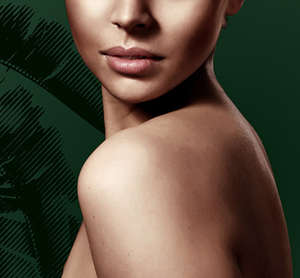الجسم
Sugaring and waxing are both popular methods of hair removal that offer temporary results by pulling hair out from the root. However, they differ in several ways, including the ingredients used, application process, and potential benefits and drawbacks. Here's a comparison of sugaring and waxing:
1. Ingredients:
-
Sugaring: Sugaring paste is typically made from natural ingredients, such as sugar, water, and lemon juice or citric acid. It is considered a more natural and eco-friendly option compared to wax, as it doesn't contain chemicals or resins.
-
Waxing: Wax can be made from various materials, including natural ingredients like beeswax or synthetic resins. Some wax products may also contain additives and fragrances.
2. Application:
-
Sugaring: Sugaring paste is applied at room temperature or slightly warmed and is spread in the direction of hair growth. It adheres to the hair and is then pulled off in the opposite direction of hair growth using cloth strips or simply the fingers.
-
Waxing: Wax is heated to a specific temperature and applied to the skin in the direction of hair growth. It hardens as it cools and is then quickly pulled off in the opposite direction, often using cloth strips.
3. Sensitivity:
-
Sugaring: Sugaring paste is generally considered less painful than wax because it adheres less to the skin and more to the hair. It is also less likely to break hair at the surface, reducing the risk of ingrown hairs.
-
Waxing: Wax can adhere more firmly to the skin, which can make the process more painful for some individuals. It may also have a higher likelihood of causing skin irritation and ingrown hairs.
4. Residue:
-
Sugaring: Any residue left on the skin after sugaring is typically water-soluble and easy to clean off, usually with just warm water. It doesn't require additional solvents or oils.
-
Waxing: Wax residue can be more challenging to remove, often requiring special wax removers or oils to dissolve and clean off the skin.
5. Temperature:
-
Sugaring: Sugaring is typically applied at a lower temperature than wax, reducing the risk of burns or heat-related skin issues.
-
Waxing: Wax needs to be heated to a specific temperature for application, which can pose a risk of burns if not done carefully.
6. Effectiveness:
-
Sugaring: Sugaring is effective at removing hair, but it may require a bit more skill to get the technique right, especially for beginners.
-
Waxing: Waxing is widely used and effective at hair removal, but it may have a higher likelihood of breaking hair at the surface, leading to faster regrowth.
In summary, both sugaring and waxing have their advantages and disadvantages, and the choice between the two often comes down to personal preference. Some individuals may prefer the natural and potentially less painful aspect of sugaring, while others may opt for the convenience and widespread availability of waxing services. It's essential to consider your skin type, pain tolerance, and desired results when choosing between these hair removal methods.
The main differences between sugaring and waxing for hair removal are:
Ingredients:
- Sugaring uses a paste made from sugar, lemon juice, and water. It's 100% natural.
- Waxing uses wax, usually resin-based, that can contain chemicals and artificial ingredients.
Texture:
- Sugar paste is more pliable, thinner, and feels less hot on the skin than sticky wax. This can result in less pain.
Adherence:
- Sugar paste sticks to the hair not the skin. This makes it gentler on delicate skin.
- Hot wax adheres to both hair and skin, which can hurt more.
Aftercare:
- Sugaring doesn’t leave a sticky residue, so there’s no need to use oil or creams to remove wax.
- Waxing requires using oils, creams or soap to remove leftover wax.
Hair regrowth:
- Sugaring can result in thinner, softer regrowth over time compared to waxing.
- Waxed hair tends to feel coarser with consistent treatments.
Overall, the all-natural sugar paste used in sugaring is gentler on skin compared to resin-based waxes used for waxing. The texture and adherence of the sugars makes for less painful hair removal with smoother results.











تعليقات